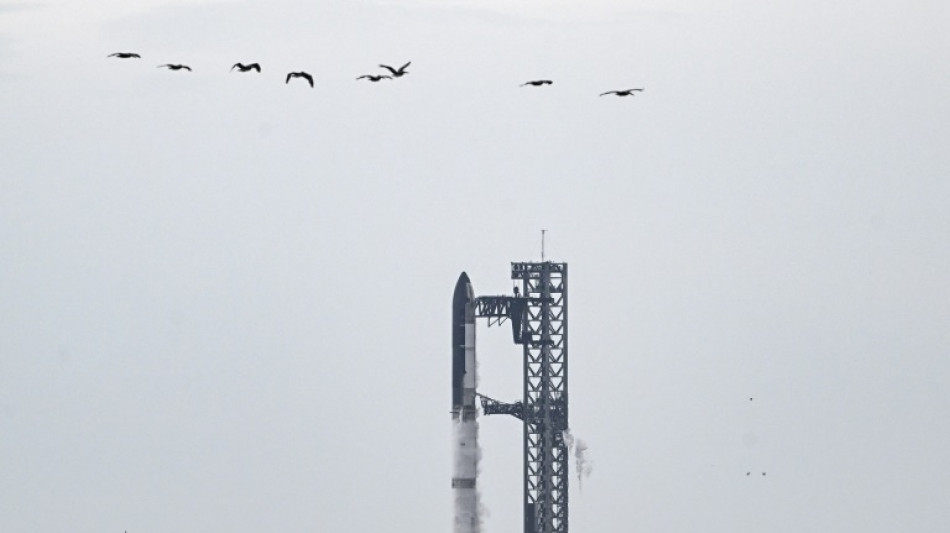
SpaceX set once more for Starship test flight

SpaceX on Tuesday was once again gearing up for the latest launch of its Starship megarocket after two successive postponements.
The tenth test flight comes after a string of explosive failures that have raised doubts about whether the world's most powerful launch vehicle can fulfill founder Elon Musk's vision of colonizing Mars or helping NASA return astronauts to the Moon.
Standing 403 feet (123 meters) tall, the stainless steel behemoth was set to lift off from the company's Starbase in southern Texas in a window opening at 6:30 pm local time (2330 GMT).
A Sunday attempt was scrubbed due to a fuel leak on the launchpad, and on Monday weather intervened, with thick clouds forcing another delay.
Much is riding on the mission, after the last three flights ended with the upper stage exploding: twice over the Caribbean and once after reaching space. In June, an upper stage blew up during a ground test.
"We've had so many tests and it hasn't proven itself reliable," Dallas Kasaboski, a space analyst for consulting firm Analysys Mason, told AFP. "The successes have not exceeded the failures."
The goal is to send the upper stage ship -- eventually intended to carry crew and cargo -- halfway across the globe before splashing down off northwestern Australia.
Outfitted with prototype heat-shield materials, it will deploy dummy Starlink satellites while flying a trajectory meant to stress-test its rear flaps.
The booster, known as Super Heavy, will splash down in the Gulf of Mexico. While SpaceX previously wowed observers by catching the booster in the launch tower's "chopstick arms," this flight will instead focus on data collection under less-than-ideal flight profiles.
Despite recent setbacks, Starship is not seen as being at a crisis point. SpaceX's "fail fast, learn fast" philosophy has already given it a commanding lead in launches with its Falcon rockets, while Dragon capsules ferry astronauts to the ISS and Starlink has become a geopolitical asset.
Still, Starship presents new challenges. Musk has identified developing a fully reusable orbital heat shield as the toughest task, noting it took nine months to refurnish the Space Shuttle's heat shield between flights.
"What we're trying to achieve here with Starship is to have a heat shield that can be flown immediately," he said on a webcast Monday.
Another hurdle is proving Starship can be refueled in orbit with super-cooled propellant -- an essential but untested step for the vehicle to carry out deep-space missions.
Time is running short to ready a modified version as NASA's lunar lander for 2027, and for Musk to make good on his vow to send an uncrewed Starship to Mars next year.
G. Lopes--JDB

 London
London

 Manchester
Manchester
 Glasgow
Glasgow
 Dublin
Dublin
 Belfast
Belfast
 Washington
Washington
 Denver
Denver
 Atlanta
Atlanta
 Dallas
Dallas
 Houston Texas
Houston Texas
 New Orleans
New Orleans
 El Paso
El Paso
 Phoenix
Phoenix
 Los Angeles
Los Angeles



